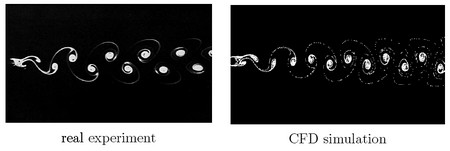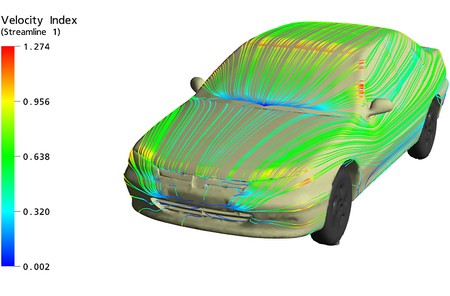Compatible: (6.2L)
2020 - 2023 Chevy Corvette C8
The APR Performance Rear Deck Spoiler integrates with the vehicle's rear deck to:
- Reduce rear-end turbulance
- Increase the efficiency of a rear wing.( ex. GTC-500 C8 Spec)
Features:
-
Factory-like fitment
This vehicle-specific component is designed to match the contours of the vehicle's rear deck area, for a factory-like fitment. -
Carbon Fiber Construction
This component is formed in the autoclave at high temperatures using pre-pregnated carbon fiber manufacturing processes, for high strength and low weight. -
UV Resistant Coating
Each Rear Deck Spoiler is finished with UV-resistant clear-coat paint for resistance against various environmental conditions (take care of this as you would take care of your vehicle's paint - polish then coat with good-quality wax or synthetic protectant). -
Mounting Hardware Included
Screws, nuts and bolts are all included to allow you to the APR Rear Deck Spoiler to your vehicle.
Computational Fluid Dynamics (CFD)

What is Computational Fluid Dynamics (CFD):
Computational fluid dynamics is a specialized sub-discipline of fluid mechanics (the study of fluid physics) that involves using algebraic equations to solve fluid flow problems. CFD has origins in the aerospace industry dating back to the 1960s, where companies such as NASA, Boeing, Lockheed, and others developed their own CFD programs to perform the analysis needed for their aircraft designs.

Using mathematical modeling and numerical methods, computations performed using powerful CFD software enable us to quickly predict and simulate what will occur in fluid flow situations (velocity, pressure, density, and temperature vs. time). In comparison to performing experiments in wind tunnel laboratories, CFD allows us to perform simulations in much more cost-effective, virtual laboratories.
CFD in motorsports: CFD is used successfully in all the top levels of motorsports, including Formula One, IndyCar, and even NASCAR. CFD is even used by car manufacturers in the development of many of today's road cars. Companies have invested tens of millions of dollars, if not more, to implement CFD design in their product. As a disclaimer, CFD is not 100% accurate. Many factors can affect the accuracy of CFD simulations, including accuracy of mathematical models, limits in computing power, and the scientist's ability to interpret the data that that comes out of the computer.
CFD is used successfully in all the top levels of motorsports, including Formula One, IndyCar, and even NASCAR. CFD is even used by car manufacturers in the development of many of today's road cars. Companies have invested tens of millions of dollars, if not more, to implement CFD design in their product. As a disclaimer, CFD is not 100% accurate. Many factors can affect the accuracy of CFD simulations, including accuracy of mathematical models, limits in computing power, and the scientist's ability to interpret the data that that comes out of the computer.

Despite its lack of total accuracy, modern-day aerodynamic design could not have progressed to its current state without the help of CFD. The results of CFD-developed automotive products are real, and can easily be seen in both race cars and road cars.

Warranty:







